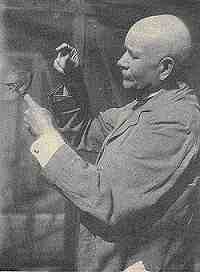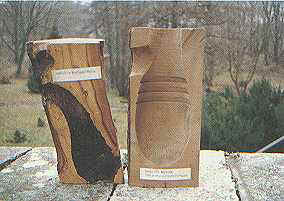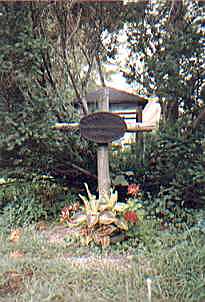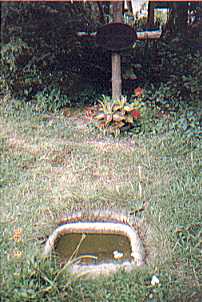|
Dr.
Sittich Hans Freiherr von Berlepsch (1857 - 1933)
The following text is an extract from a flysheet of the State Bird-Protection-Station Seebach in the Republic Thuringia, eldest Bird-Protection-Station of Germany. "Learn first to understand the life of the birds exactly before you want to protect them with right success." In the year 859, Sebecke, presently Seebach in the Unstrut-Hainich District, is mentioned in a land bestowal for the Würzburg’s bishopric for the first time. The castle of Seebach, encircled by water went in 1527 through purchase to the castle bailiff of the Wartburg, Hans von Berlepsch.
He proved his commitment to bird protection outside Germany as well; for example, by speaking in May 1890 on the 2nd International Ornithological Congress in Budapest against killing wild birds in Italy. His investigations of the cave homes of woodpeckers in 1898 led to the first mechanical production of a modified home which later became known as the "Berlepsch’s Nestcave." "All my used and proposed methods for the
protection of our birds are only copies of the nature, copies of certain
features I observed in nature"
In 1899 von Berlepsch described his experiences and diagnoses in the practical bird protection book: "The entire bird-protection - its reason and implementation on scientific, natural basis ". This work was translated into 6 languages, experienced 12 editions and made the Seebach Bird Protection Station widely known. In the year 1908, the Seebach Bird Protection Station was acknowledged as an exemplary institute for bird research and protection by the Prussian government. This date is regarded as the birthday of the oldest, state authorized bird protection station in Germany. In following years, numerous bird-protection courses emerged in Seebach. For his merits in the area of the ornithology Hans Freiherr von Berlepsch was awarded an honorary doctorate in 1923 by the Halle-Wittenberg University. Noted
ornithologists from around the world visited his Bird Protection Station
in Seebach seeking advice. In December 2006, the well known Japanese author for nonfiction books for children Toshihide Kunimatsu wrote the book "Birdhouses are saving lives in the forest.", in which he introduces Sittich Hans Frhr.v.Berlepsch as the inventor of birdhouses in Japan. The Nestor of bird protection died on the 2nd September, 1933
von Berlepsch’s grave and a birdbath in a churchyard in Seebach. * * * Anecdotes: The impassioned nature lover was always prepared for surprises and ready for making jokes. He had always something collected from nature in his jacket pockets. It is reported that he made trouble for ladies at a dinner table by producing a live snake which, although harmless, caused hysterical excitement. He was also known for a severe displeasure for apples and became extremely irritated if this fact was neglected. It is reported that it was offered him a glass plate of apple must, which angered him so much that he transferred the plate with the apple must outside, to the fright of the hostess, through a closed window. In this house he remained spared from apple must since that time. Travelling to home from army manoeuvre practice, he observed birds in a hedge (night swallows) which interested him very much. He told the riders to dismount, sent a few men to fetch beer in the nearby hamlet and caught with the remaining men some of the interesting birds. Upon finally arriving at the barracks, the day had long since passed. On the next day, the unit was praised for especially long enduring before the "enemy" and he was honoured with a decoration. He, in his own words, got the idea of the "feed-bell" - a winter safe feeding device - in the winter of 1901 quite suddenly during an especially boring sermon at the village church. He just looked more intensively at the already often seen electric illumination fixtures that hung down from the ceiling. From this moment of inspiration, he concluded that "A moment of quiet beholding often gives us more than years of laborious works". * * * Biography (please click) - all publications (1891- 1933) of Dr. Sittich Hans Freiherr von Berlepsch and his co-workers from the Bird Protection Station in Seebach. Statement for all links in this homepage: In accordance with decision of 12.May 1998 - 312 OS 85/98 - "liability for links" by the Regional Court (LG) Hamburg we hereby expressly explain that we have no influence on the contents of linked pages outside this homepage, for whose contents we cannot be liable and that we dissociate from contents of linked sites that are against valid laws. |
||||||||||||||||||
|
|
||||||||||||||||||
.jpg)

.jpg)


